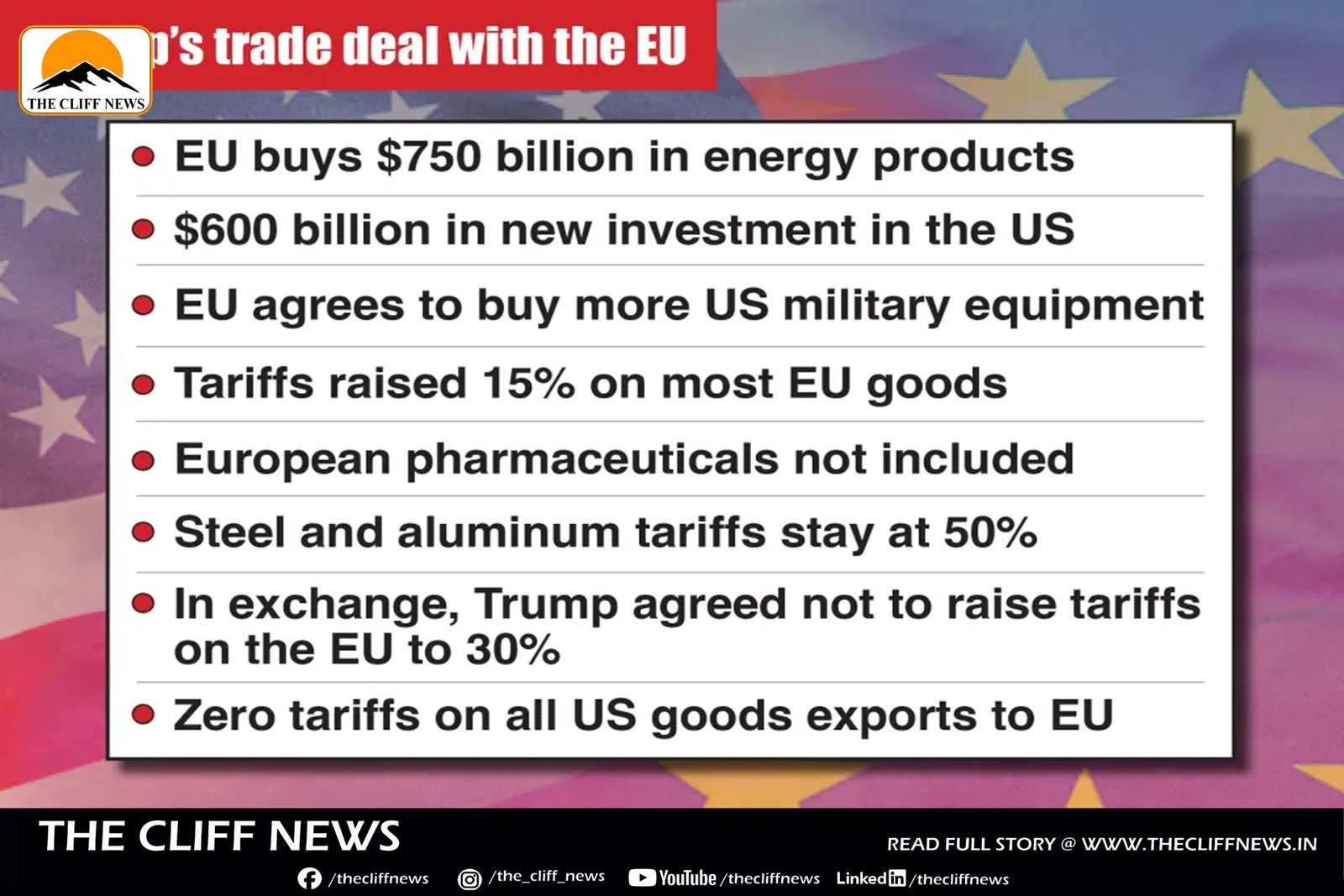In a dramatic 11th-hour breakthrough, the United States and the European Union have reached a pivotal trade agreement that will impose a 15% tariff on EU goods entering the US — replacing the previously threatened 30% levy. The announcement came just days before the looming August 1 deadline, following high-level negotiations between US President Donald Trump and European Commission President Ursula von der Leyen at Trump’s Turnberry golf resort in Scotland.
“It was a very interesting negotiation. I think it’s going to be great for both parties,” Trump said, calling the new deal a step forward in correcting long-standing imbalances in US-Europe trade relations. “We’ve had a hard time with trade with Europe, a very hard time,” he added, citing fairness as the key sticking point.
15% Flat Tariff Across EU Exports
The deal imposes a flat 15% tariff on all EU exports to the US, including automobiles, which were previously taxed at 25%. The rate aligns with the terms of the recent US-Japan agreement finalized earlier this week.
“We are agreeing that the tariff straight across, for automobiles and everything else, will be a straight across tariff of 15 percent,” Trump confirmed.
EU Commits to Massive US Energy Buys and Investment
A major win for the US side is the EU’s pledge to purchase $750 billion worth of American energy and commit an additional $600 billion in investments into the US economy. Trump hailed the deal as “a good deal for everybody,” while von der Leyen emphasized the importance of the agreement for economic certainty: “It will bring stability. It will bring predictability. That’s very important for our businesses on both sides of the Atlantic.”
Commerce Secretary: “No More Extensions”
US Commerce Secretary Howard Lutnick underlined the finality of the agreement, saying, “No extensions, no more grace periods. August 1, the tariffs are set, they’ll go into place, Customs will start collecting the money and off we go.”
US Locks In Trade Deals with Six Nations
The EU is the latest among six nations — including the UK, Japan, Vietnam, Indonesia, and the Philippines — to ink trade agreements with the US ahead of the rapidly approaching deadline. These deals are part of President Trump’s aggressive efforts to reform the global trade system, targeting what his administration sees as unfair foreign trade practices.
While the new tariff rates are generally higher than the 10% base level the US has maintained since April, they are notably less punitive than the steeper tariffs threatened in recent months.
Global Markets on Edge
With only a few days left before the tariff implementation deadline, global markets remain watchful. Economists and business leaders alike are warning that failure to secure deals with remaining trading partners could rekindle trade tensions and destabilize global supply chains, especially in the transatlantic corridor.



